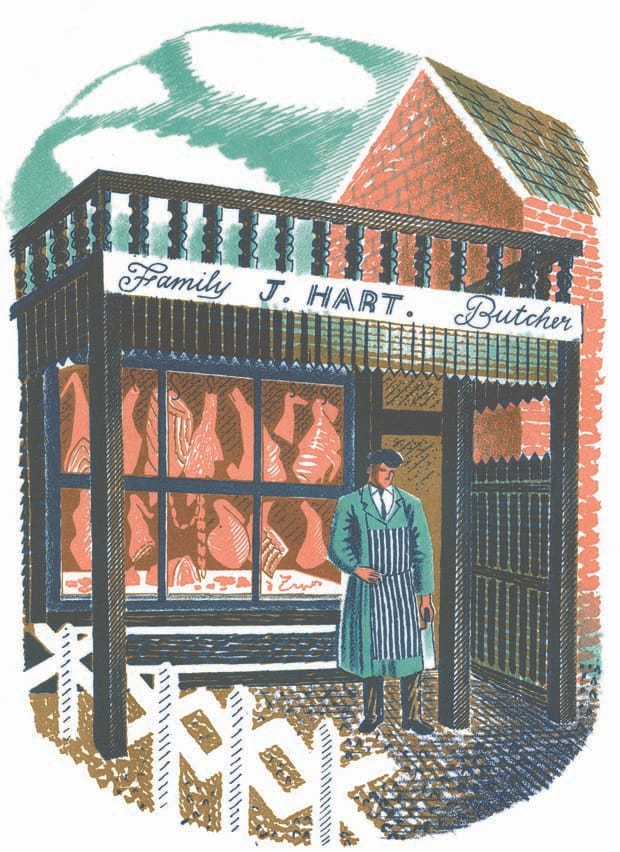In this Archive piece from Grafik 175, Yolanda Zappaterra talks to publisher Tim Mainstone about the beguiling work of much-loved illustrator Eric Ravilious and his depictions of the English high street.
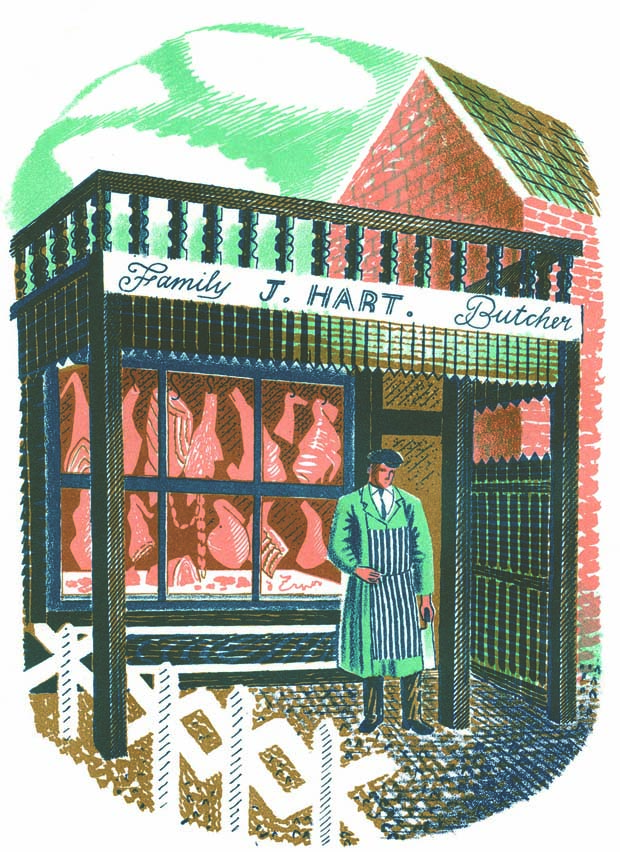
North Norfolk may not previously have been on any art-history map, but with the publication of a recent book that could be set to change. Eric Ravilious: The Story of High Street, by Alan Powers and James Russell, brings back into the world a book that, until now, had been as rare as hen’s teeth, and it all began in a second-hand bookshop in Burnham Market, where publisher and bibliophile Tim Mainstone was drawn to a series of illustrations of shop fronts being shown in the bookseller’s tiny gallery. They were pages from a book featuring twenty-four lithographs of traditional English shop fronts by the English artist and illustrator Eric Ravilious, a book that had only been printed as a run of 2,000 copies in 1938 before the plates that made it up were destroyed during World War II. “The pictures exhibited a very English sense of calm and beauty, and they were wonderful examples of autolithography,” recalls Mainstone. For an art-history student whose focus had been contemporary American art, they were a revelation. “I sought out other work by Ravilious and was struck by his vision; it makes you look at the world in different ways,” he enthuses. “He had particular talents of imagination linked to a quality of formal design,” adds Powers.
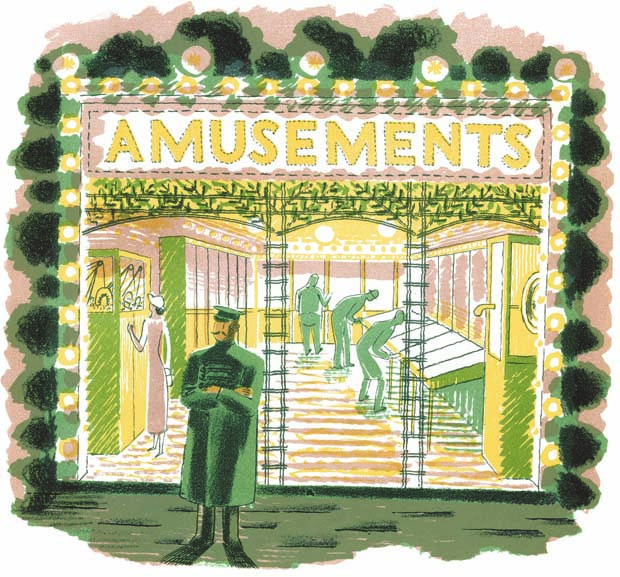
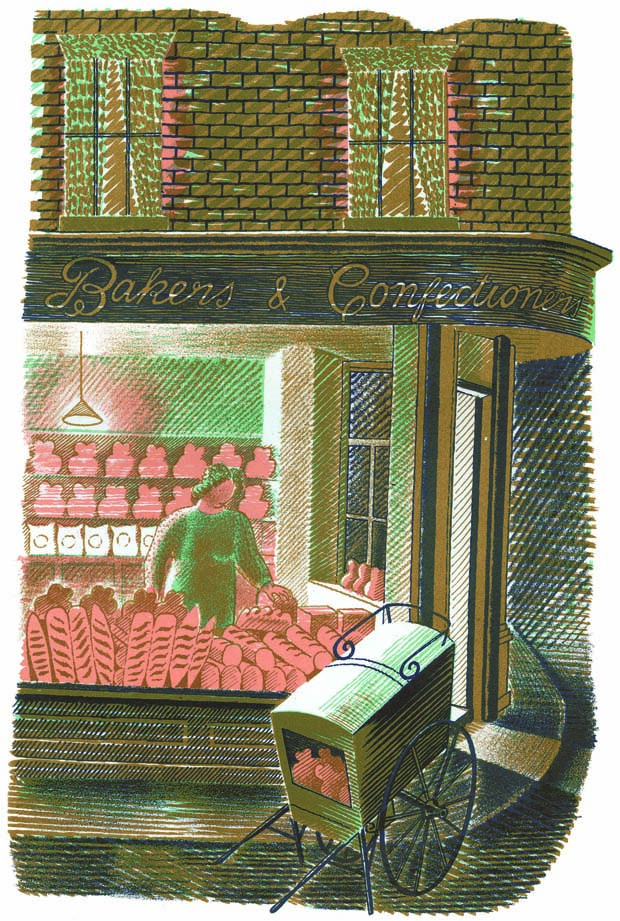
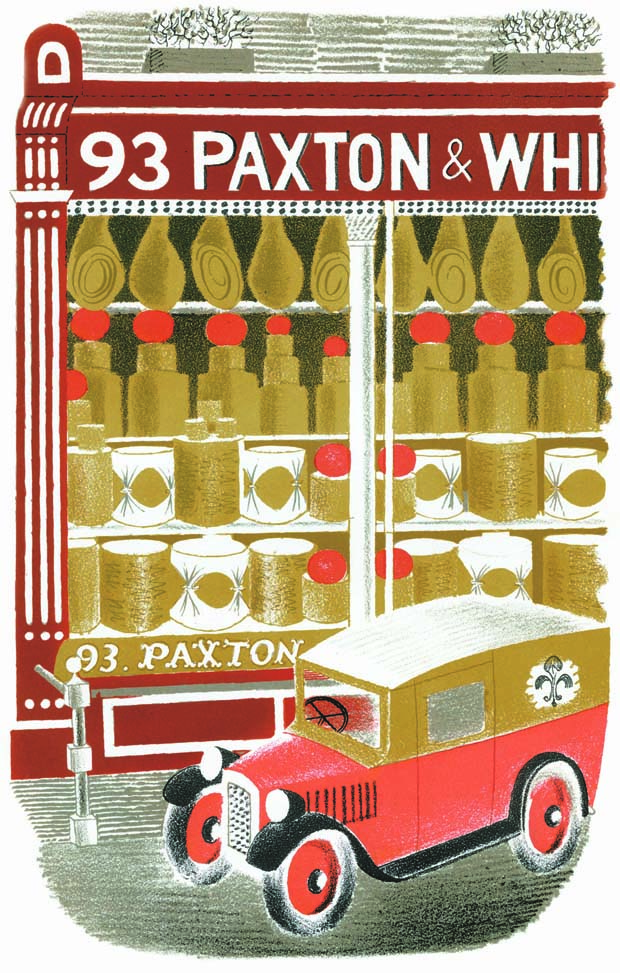
Ravilious’s importance in English illustration right through to the 1950s is undisputed, as evidenced by its similarity to the imagery and design associated with the Festival of Britain, but it waned as pop art and Abstract Expressionism took hold in the Sixties. It would be almost fifty years before a major retrospective at the Imperial War Museum in Ravilious’s centenary year of 2003 reinstated the importance of this English artist, designer and illustrator. What the exhibition clearly showed was how Ravilious’s work has a timeless and rare ethereal beauty that still enthralls and informs, even without the historical context that would have made his work so compelling and evocative at the time it was created.
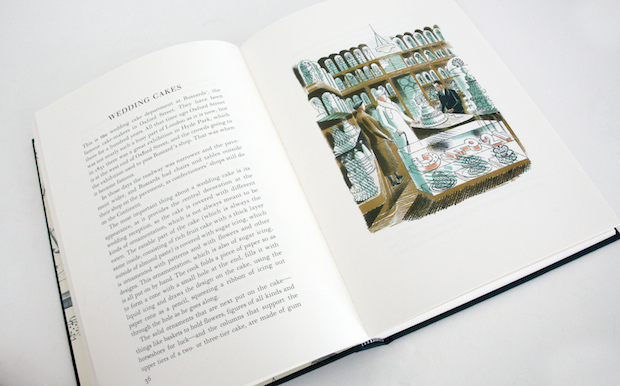
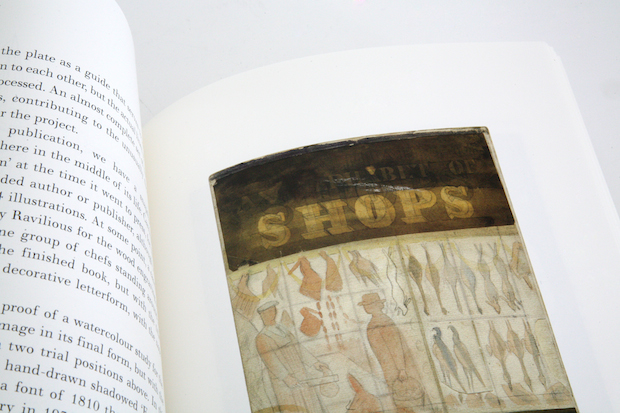
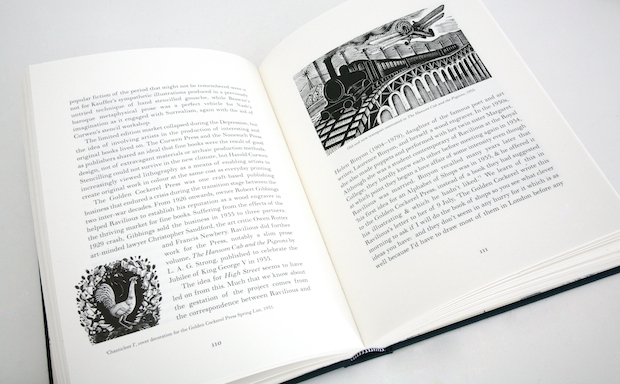
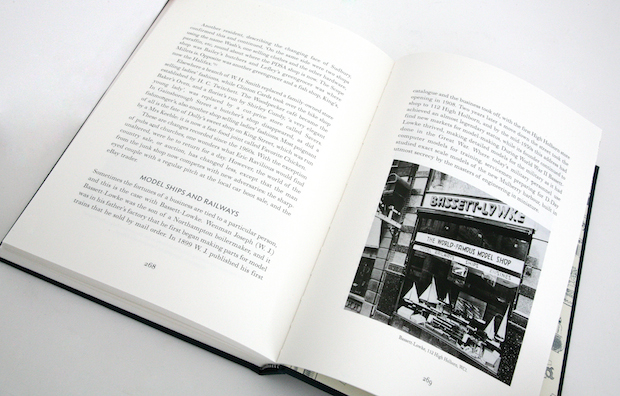
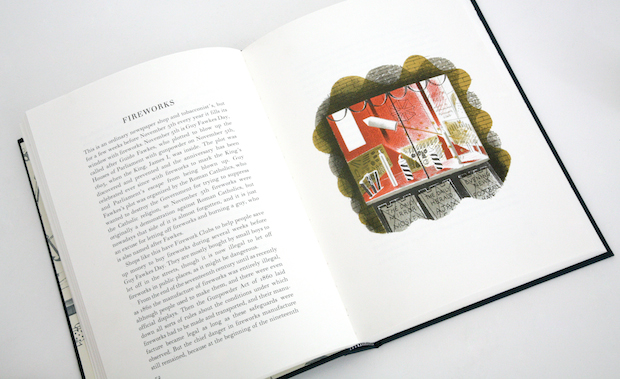

In his landscapes of rural scenes, harbours and coastlines in watercolours and wood engravings, the delicacy of Ravilious’s subtle lines, colours and tones seem to represent better than anything a fiercely loved way of English life that had been battered by the Industrial Revolution then destroyed by the Great War. His graphic work for Wedgwood and London Transport, the famous murals he painted in Lambeth’s Morley College and the Midland Hotel in Morecambe, and the hundreds of illustrations for children’s books all exhibit the same gentle sensibility and concerns, and when he was made an official war artist in World War II, he brought a similarly expressive and emotive way of seeing to his war work, imbuing planes and submarines with personality and using light, patterns and oblique perspectives to depict interior spaces such as guard rooms and offices as abstract machines of the war effort. Particularly eloquent are his landscapes and depictions of war in the Arctic, which he loved, and which drew him to his death in Iceland in 1942. It’s perhaps his untimely death that has created part of his enduring appeal, but largely it’s the work itself, and in particular its sense of nostalgia. “I would say that nostalgia is inherent in everything he did,” says Powers, “and I would define it as a sort of inner life of objects and places that he captured, that conveys their ‘soul quality’ powerfully. It is not surprising that these places need to be old, and also rather unfashionable. It is not surprising that people recognise this quality in his work latterly. They will never be in love with the work of Edward Wadsworth or Wyndham Lewis in the way they are with Ravilious.”
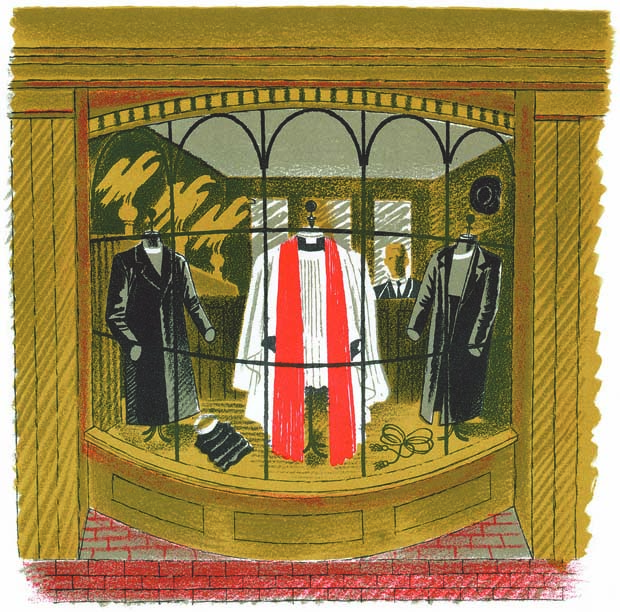
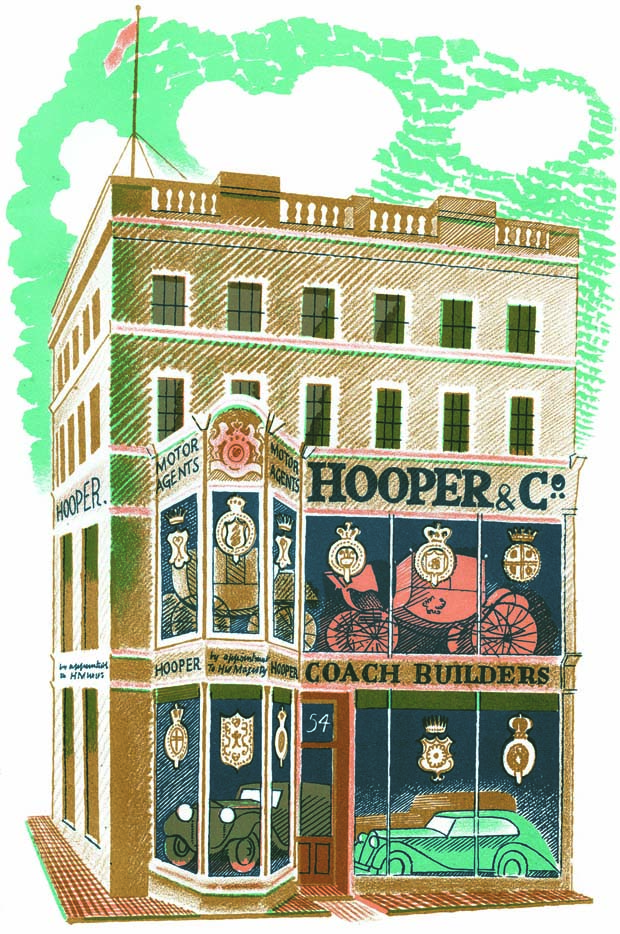
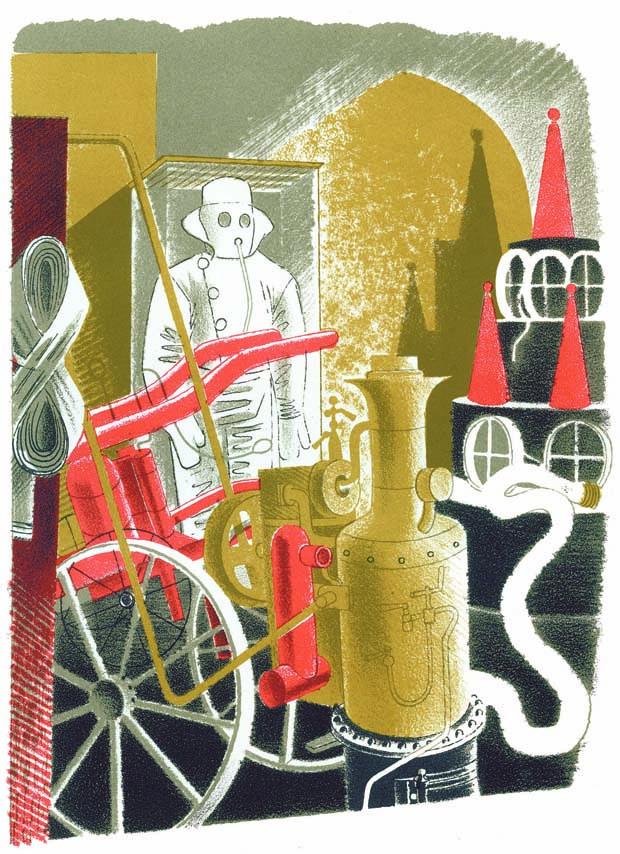
Even before the Imperial War Museum exhibition drew thousands of new fans to the work of Ravilious, second-hand copies of High Street were in high demand by fans that couldn’t get enough of his precise cross-hatching and intricate use of colour. By the end of the retrospective in 2004, copies were selling for thousands of pounds and Tim Mainstone decided it was time this amazing body of work was made more widely available. “I like quests,” he says, “finding things. It underlines everything we do at Mainstone Press, and so I set out to find a copy of the book in good condition, and recreate it.” It wasn’t easy. “It took me a year of research just to discover who owned the copyright,” recalls Mainstone. From the outset he knew he didn’t want to simply create a facsimile of the original, which married twenty-four lithographs of shop fronts with almost comically serious text aimed at children as well as adults, written by Ravilious’s friend and architecture writer JM Richards. Instead, what Mainstone developed and eventually published was a beautiful limited-edition book that faithfully reproduces the twenty-four images and accompanying texts, and adds two accessible and informative essays.

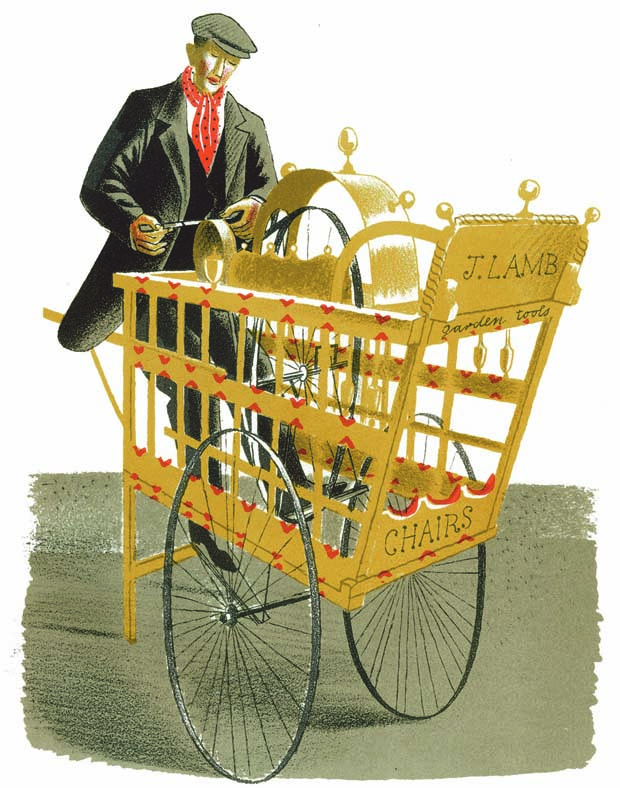
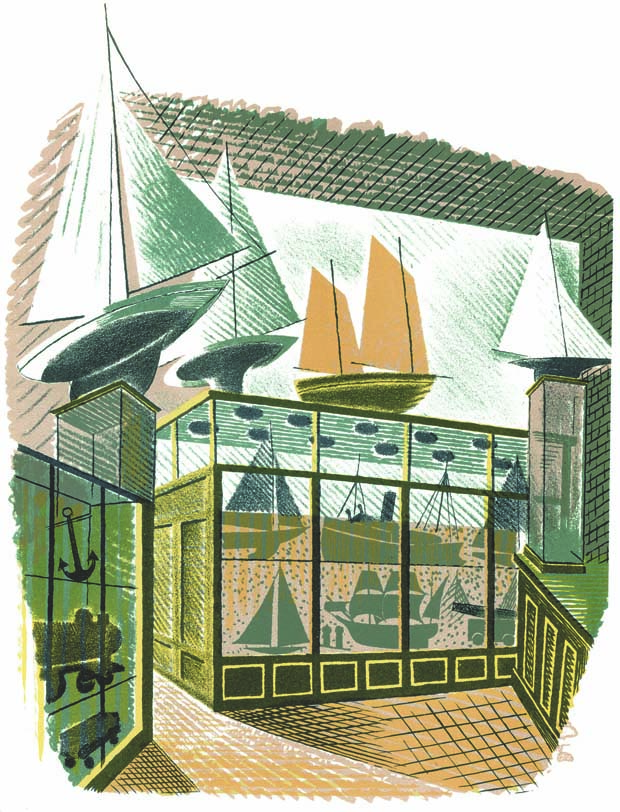
The first, by art historian Alan Powers, gives an exhaustive account of the book’s back-story. From the importance of publisher Harold Curwen’s background in music publishing (printed using lithography rather than letterpress) and the pivotal roles played by Ravilious’s peers and friends in developing the book, to the influence of other forms—among them Russian children’s books, which used lithography extensively, lithography in fine art, and even other forms of art, like Eugène Atget’s photography—Powers’s essay makes for an absorbing story. Ravilious had created only two lithographs before embarking on High Street, and Powers includes many of the artist’s thoughts on his progression with the medium, as well as evidence that suggests the shopkeeper’s son saw the project as enjoyable a quest as Mainstone would find it fifty years later.
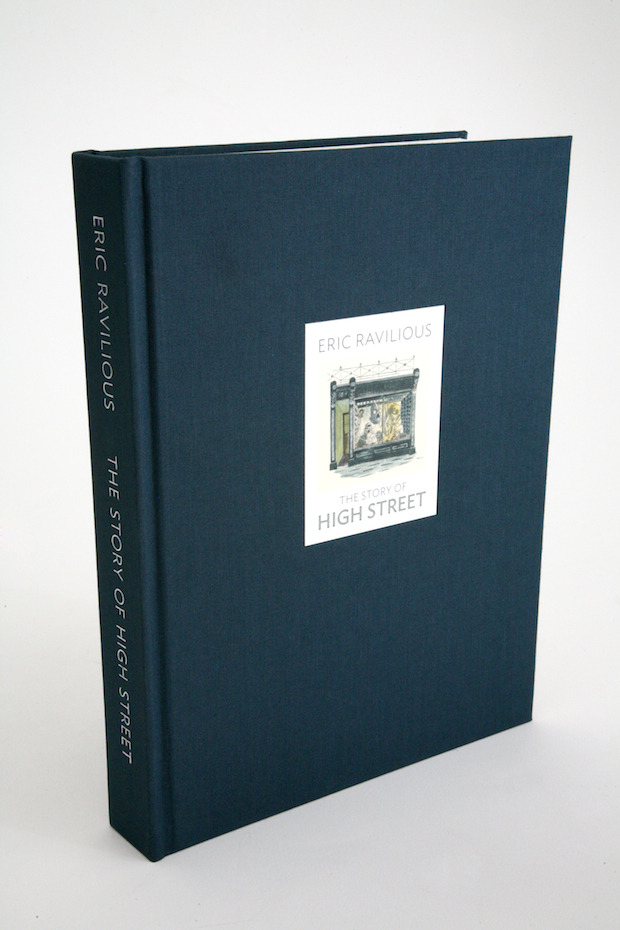
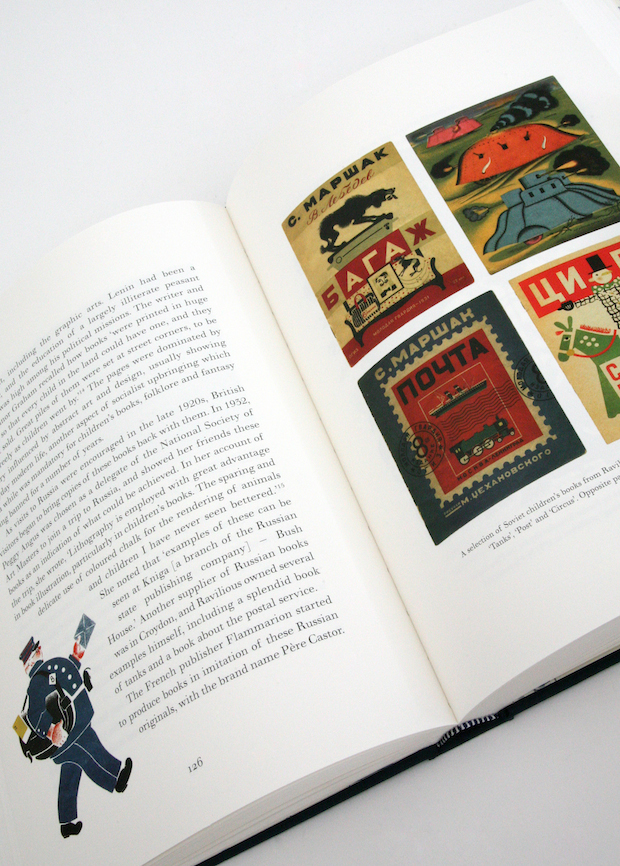
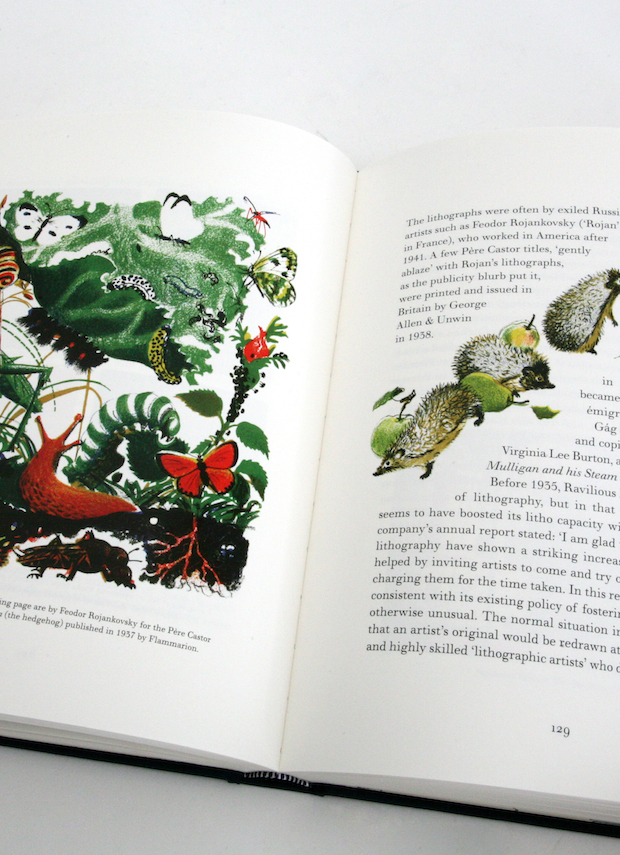
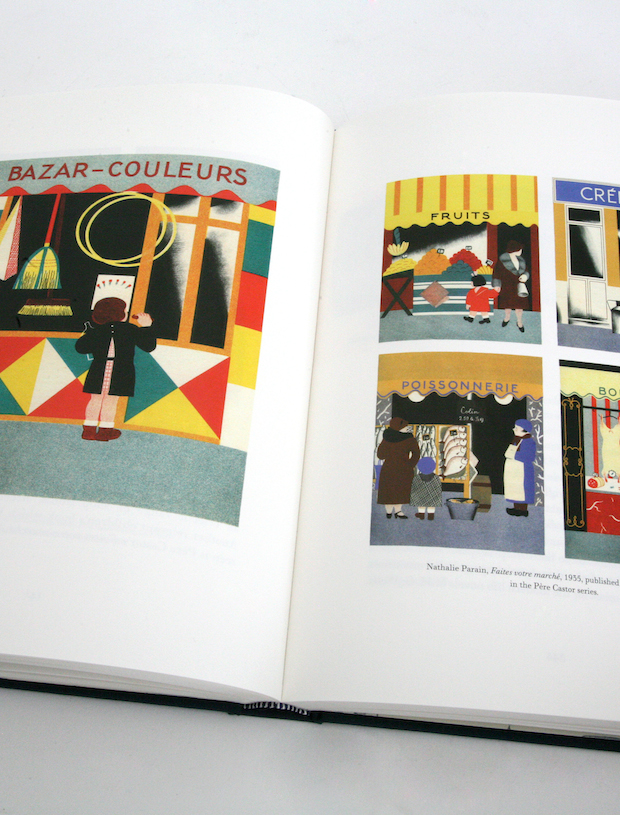
Locating the shops formed a large part of Ravilious’s pursuit, and it’s on this that the second essay, by historian and writer James Russell, focuses, recording the detailed search that he and Mainstone undertook to uncover the original location of the shops, all of which were real places, but most of which were unidentified in the original artwork and texts. In some cases they were unsuccessful, but each is like a mini-detective story, with research that included the input of a bell ringer, the dedication of a local historian and an old unopened envelope in a house in Orkney that “turned out to be a treasure trove of information,” recalls Mainstone.
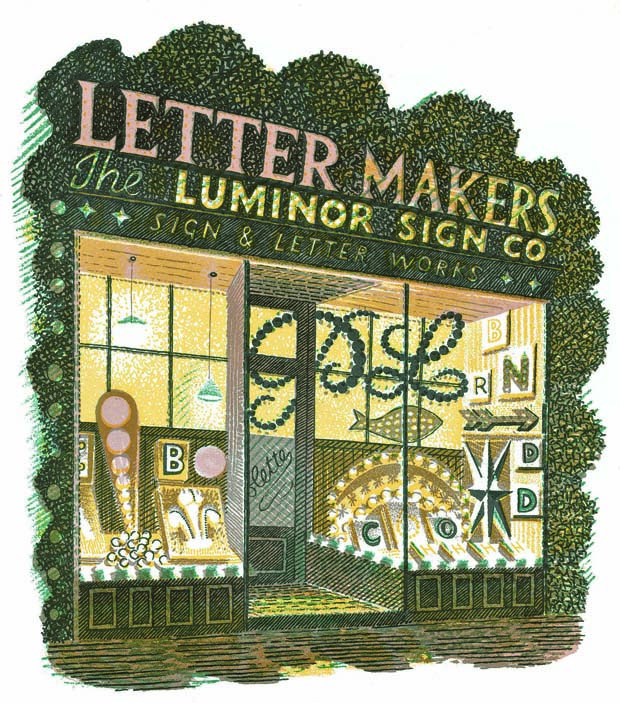
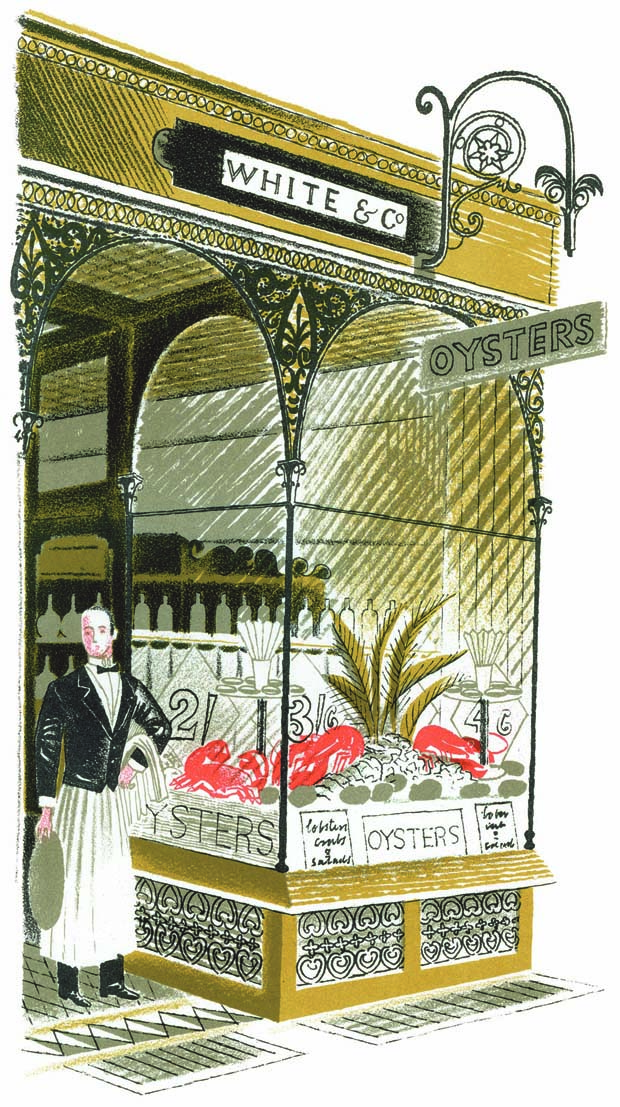
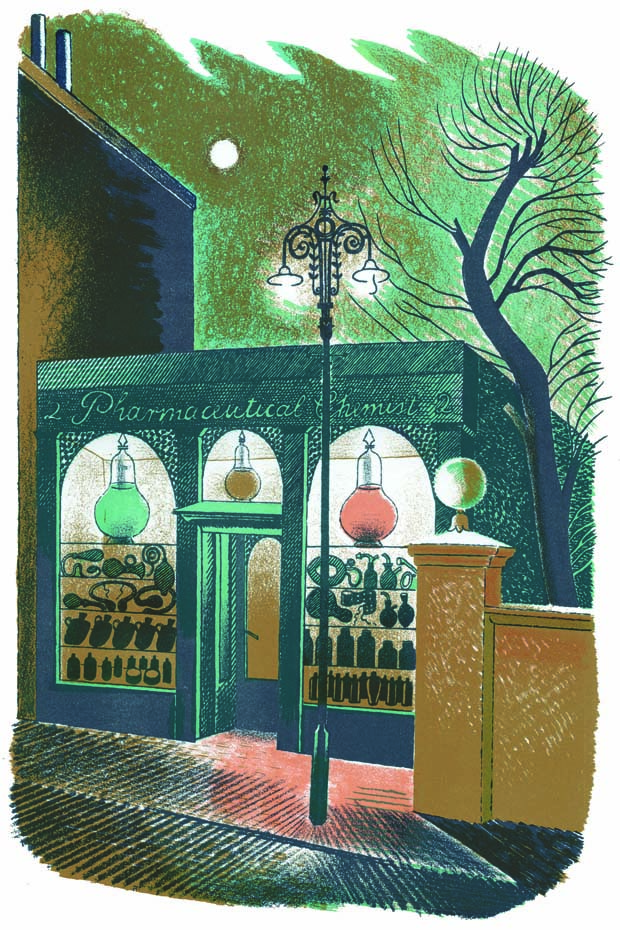
Very few of the shops still remain—the Jermyn Street cheesemonger Paxton and Whitfield is the only one that’s still plying the same trade it was in 1938—but in locating the firework shop in Sudbury and the letter-maker in London’s City Road, the wedding-cake shop in Oxford Street and the ham shop in Bond Street, what the new book offers is a historical document that beautifully complements and completes Eric Ravilious’s original portrait of a nation of shopkeepers. “The production of it was long and arduous but hugely successful,” says Mainstone. He recalls part of the production that’s a perfect end to the saga of The Story of High Street, and one that suggests that while shops like the ones in High Street are increasingly rare, their spirit is still strong. “When I found the original book I needed to find a bookbinder who would carefully unstitch it and then stitch it back together so that we could scan each of the images; the person I found said it would cost £50 but that I should pay him when I came back to get the book restitched. The production and repro process took a couple of years, but he never chased me for the money, and when I went back he just raised an eyebrow and said: ‘I wondered what had happened to you.’”
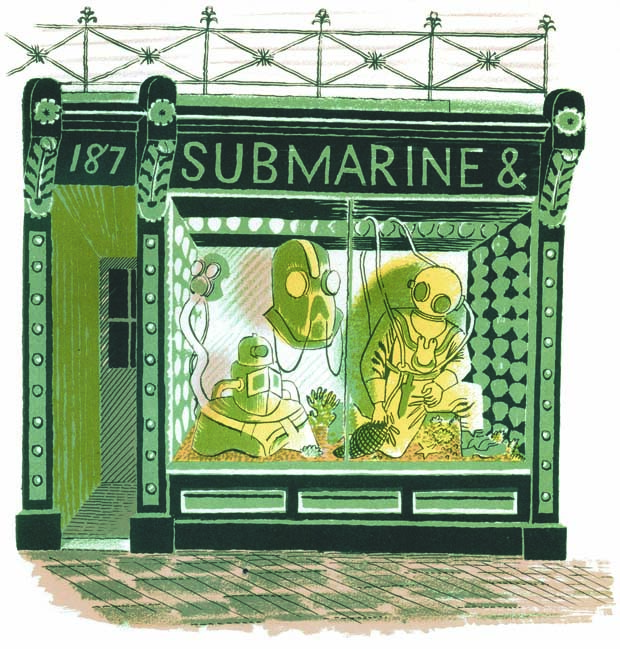
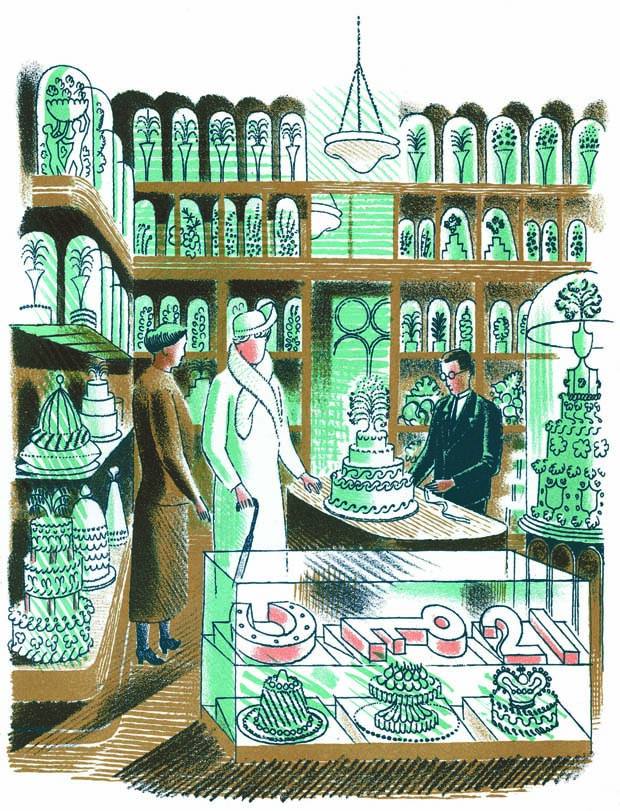
Eric Ravilious: The Story of High Street was published in 2009 as a limited edition of 750 copies by Mainstone Press. It has long since sold out, but you can find information on Mainstone’s new releases (including more tomes dedicated to Ravilious) at themainstonepress.com.

